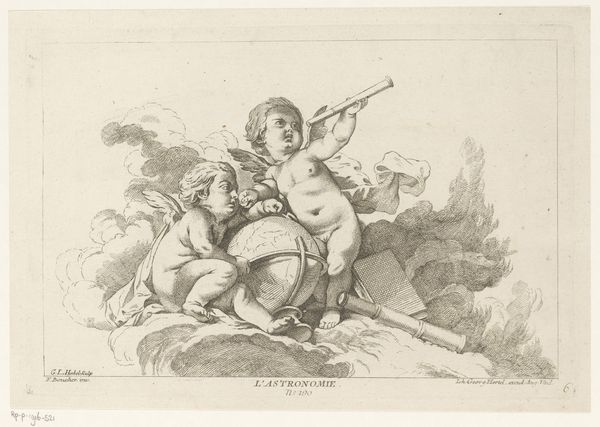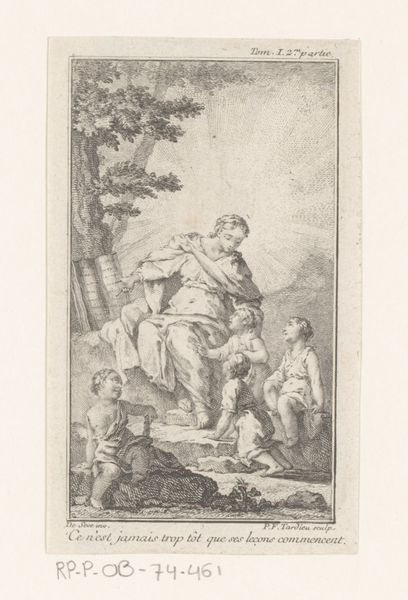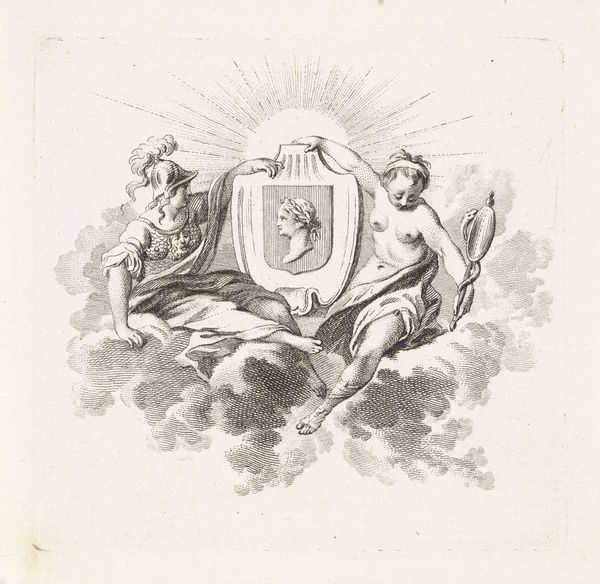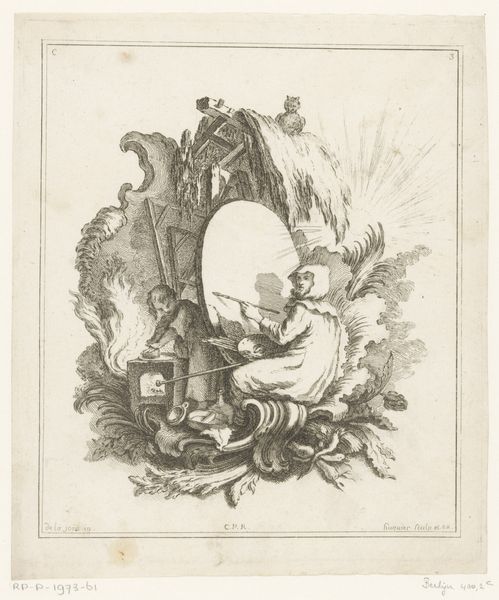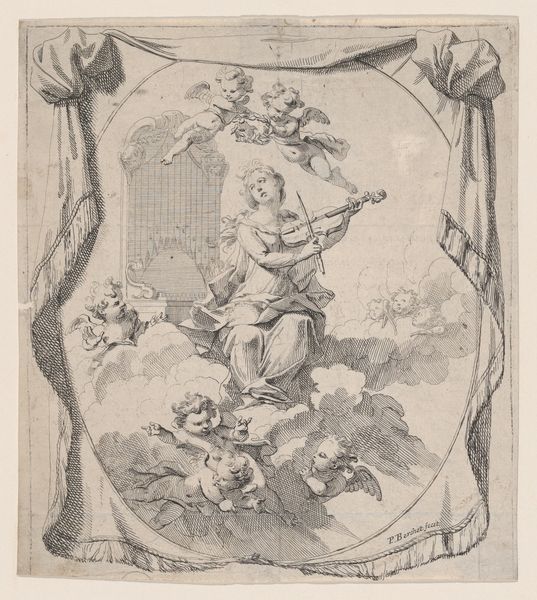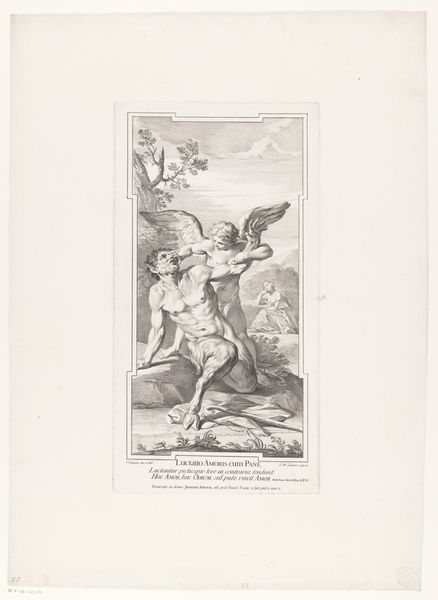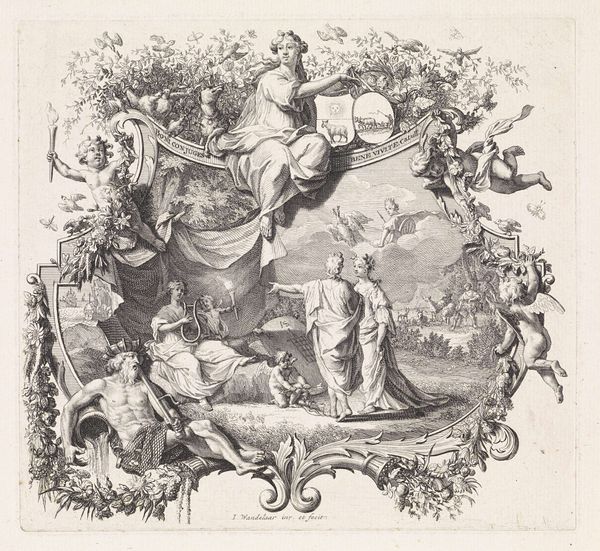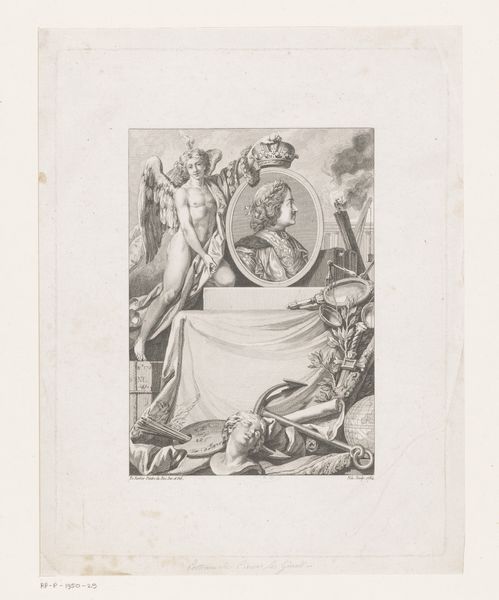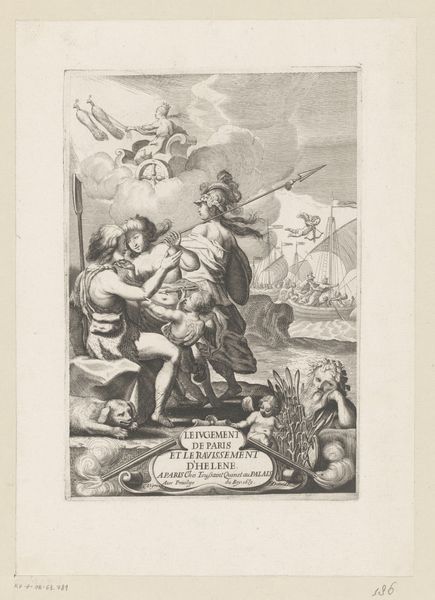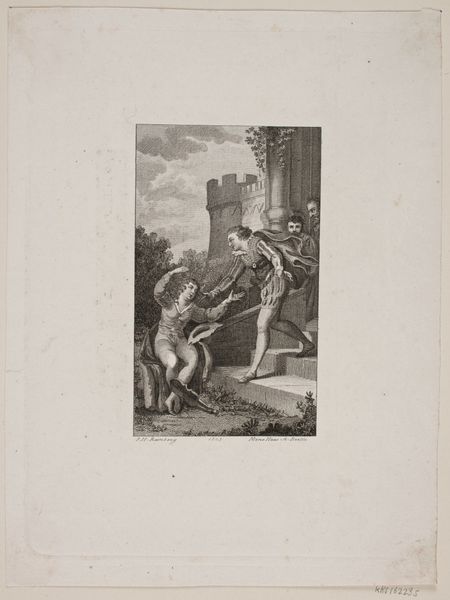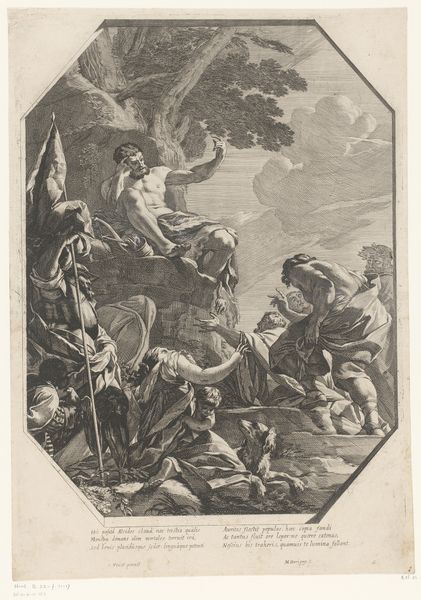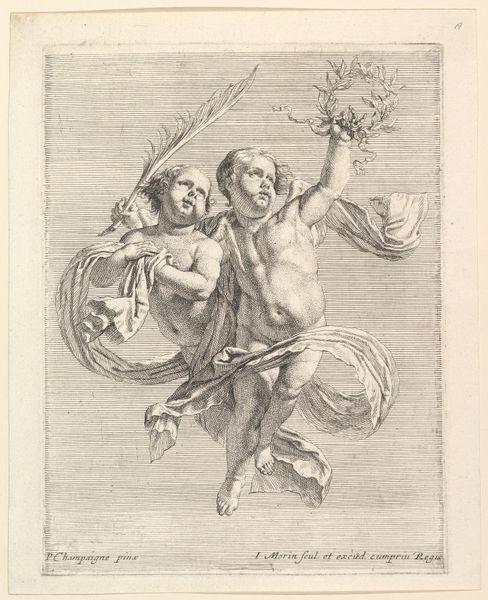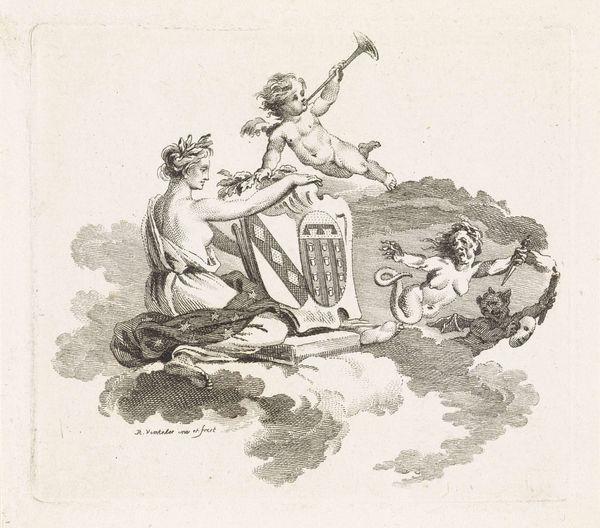
Vignet met twee putti op een wolk met VOC-vlag en wapen met portretbuste 1751 - 1816
0:00
0:00
reiniervinkeles
Rijksmuseum
Dimensions: height 88 mm, width 77 mm
Copyright: Rijks Museum: Open Domain
Curator: What a delightful vignette! This piece, dating from 1751 to 1816, by Reinier Vinkeles, features two putti nestled on a cloud. It’s an engraving with pen on paper. The Rijksmuseum is fortunate to have it in its collection. Editor: My first impression? It feels like propaganda, but, well, cherubic propaganda. Innocence weaponized. The stark lines of the engraving give it a slightly ominous feel, despite the cute babies and fluffy cloud. Curator: Oh, "weaponized innocence," I love that! Vinkeles often created works like these, commissioned for various publications. See the VOC flag—that's the Dutch East India Company—and the portrait bust? It's an allegory, perhaps meant to ennoble the company. Editor: The Dutch East India Company, though... hard to feel "ennobled" when you know its history. A multinational trading company responsible for so much colonial violence and exploitation. The putti holding *that* flag feels deeply unsettling. Like a sweet song sung with a monstrous undertone. Curator: Yes, the contrast is striking. But think about the original audience. They might have seen those cherubs as symbols of prosperity and divine favor for Dutch trade. It's interesting how much context shapes the reading, isn’t it? Editor: Absolutely. These aren’t just cute babies floating on a cloud; they are active participants, legitimizing a brutal system. The portrait bust—probably a company director—is central to the visual message, placed firmly between those cherubic hands. Curator: You’re right. And the detail! For such a small engraving, the detail in the cloud's texture, the tiny faces, and even the flag is just astounding. A testament to Vinkeles' skill. He could cram an entire worldview into a tiny rectangle. Editor: And that worldview, seen through our contemporary lens, forces a critical reassessment. We are no longer passive viewers. The artwork is not frozen in time; its meaning evolves. Curator: A beautiful reminder, yes. I now wonder about those initial intentions compared to its modern implications… It's unsettling and gorgeous at the same time. A curious piece. Editor: Indeed. What initially appears saccharine becomes a mirror reflecting our own shifting understanding of history and power. Always remember to dig a little deeper below surface, that’s my key take away.
Comments
No comments
Be the first to comment and join the conversation on the ultimate creative platform.
